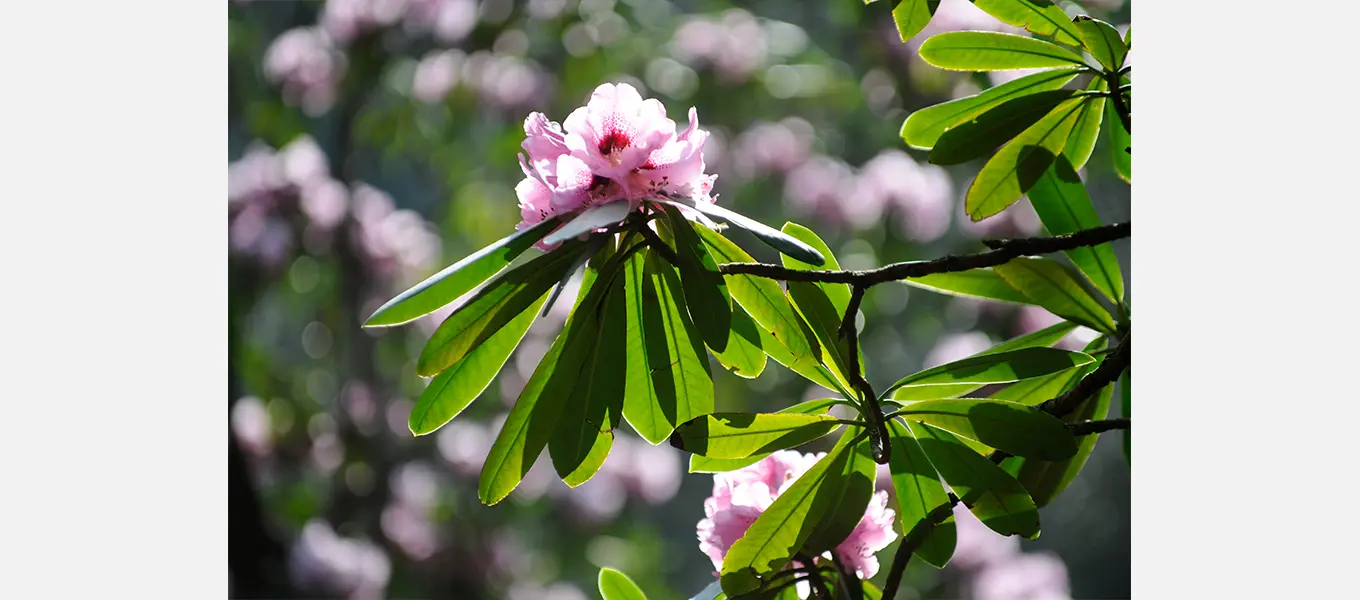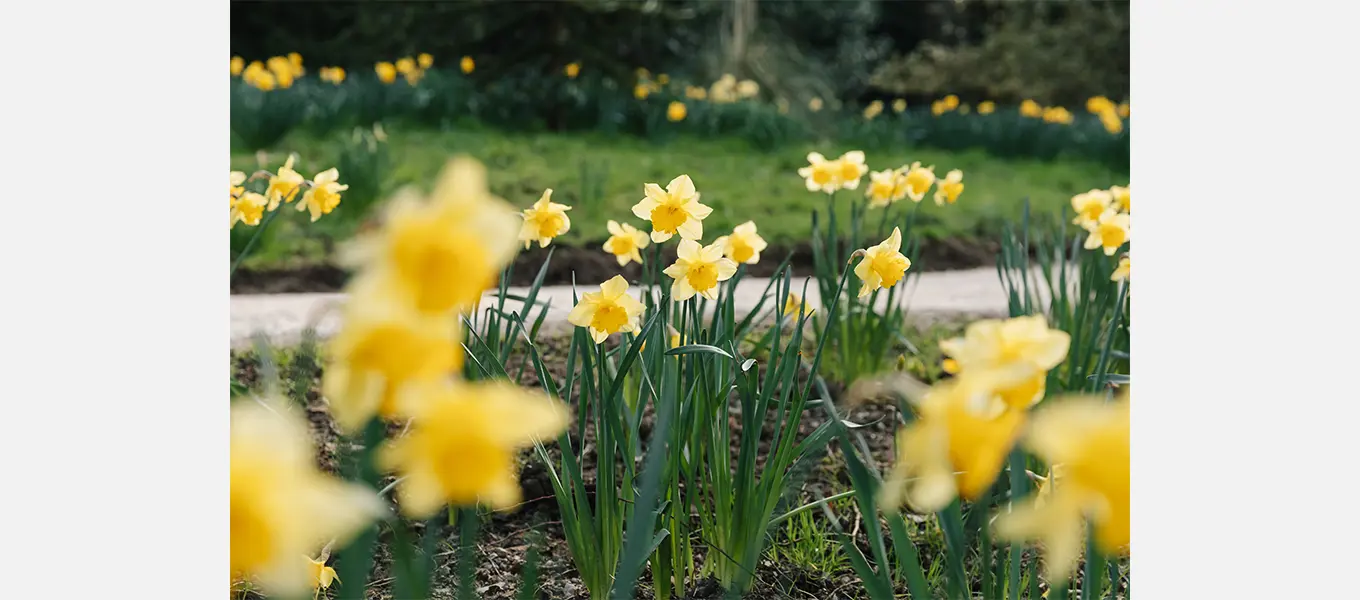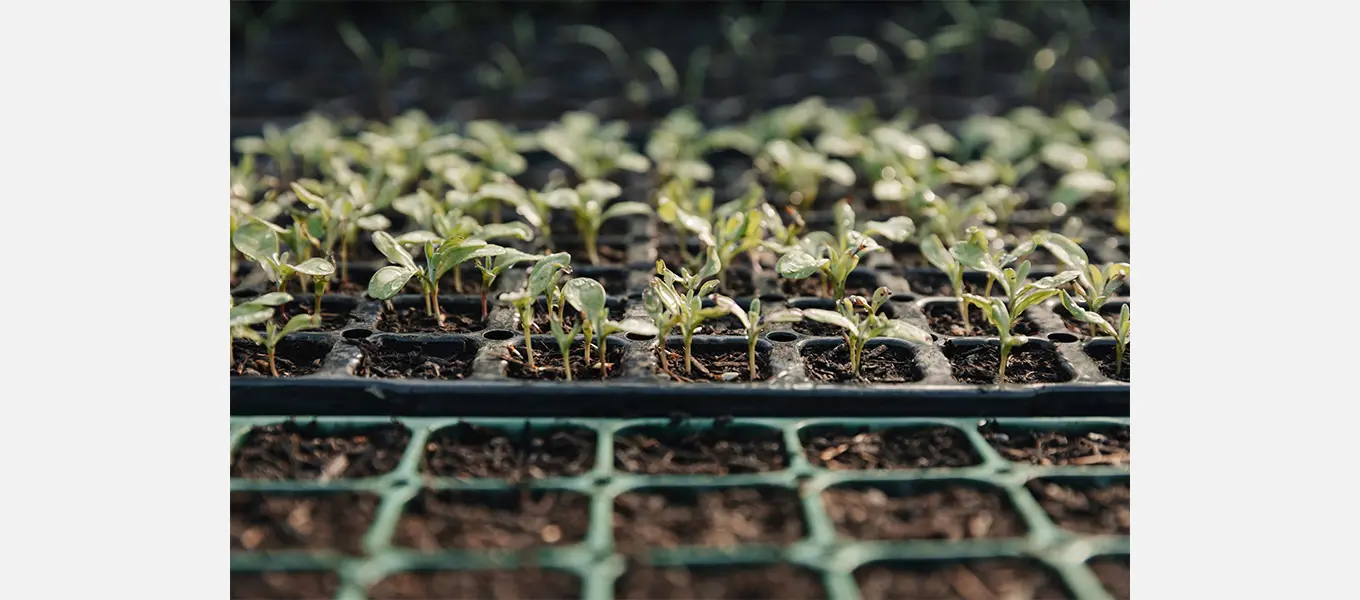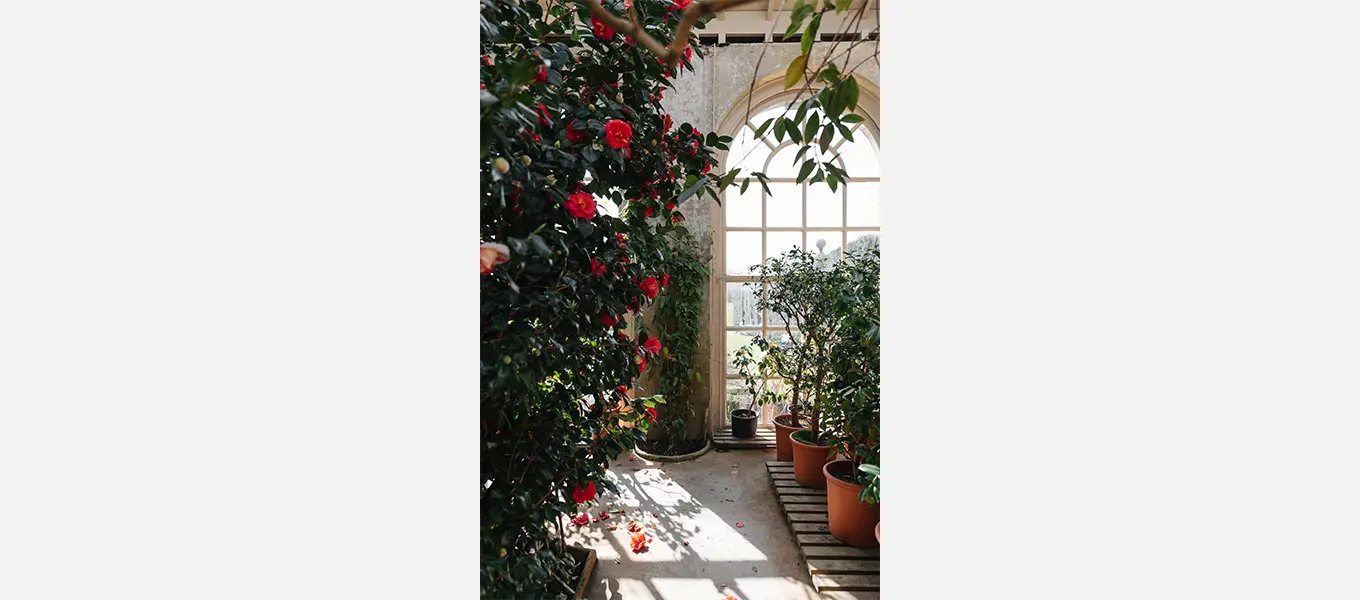With layers of colour bursting back into the ornamental garden, spring has certainly made it presence known. Up high, the pinks and reds of Rhododendron, some 20 - 30 feet tall, punctuate the woodland scene behind the Grotto House. At eye-level, clusters of delicate yellow flowers sparkle on the naked stems of the Cornelian cherry (Cornus mas) and winter hazel (Coryopsis spicata) in the shrub layer. Early prunus blossom is beginning to open and there’s scent from flowering currants (Ribes), Daphnes, winter flowering honeysuckle and the Oregan plum (Oemlaria cerasifomis).

The pinks and reds of Rhododendron add splashes of colour to the garden
Carpeting the ground is a mosaic of spring flowering bulbs, primroses, cowslips and hellebores, interspersed between the fresh basal growth of the herbaceous perennials which will provide changing interest throughout the year. It’s a great time for both standing and admiring the emerging beauty and to consider what the garden will become. The team are busy pruning, feeding, mulching and controlling weeds to not only ensure the newly planted areas knit together to form spectacular displays, but so that the most established plants in the collections are kept in good health too.

Daffodils are among the spring flowering bulbs carpeting the ground
We focus on controlling the newly emerging weeds in the most sustainable ways possible. By running a hoe over the borders we are able to kill most annual weed seedlings before they set seed. For maximum effectiveness, this is best done on a dry day with a light wind, so that the seedlings will dry out on the surface of the bed rather than re-rooting into moist soil. For larger, perennial weeds, pulling/digging out the entire root system is the best method to deal with their persistence. After weeding, the team will finish the area with a 10—15cm layer of mulch that will smother any remaining weeds and act as a barrier to prevent their regrowth.
In addition to weed control, the last of the grasses and other perennials left for winter interest are being cut back and tidied to reveal their new growth. Clumps of herbaceous perennials that have become too large for their allotted space, as well as those that are flowering poorly or have lost their shape, are being lifted and divided. Most perennials benefit from division every two to three years to maintain health and vigour. Summer flowering plants are best lifted and divided in autumn or in early spring as the ground is warming.
In the Kitchen and Cutting Garden, most of the visible plant growth is undercover in the glasshouses and cold frames. There are anemones and Icelandic poppies just starting to flower and cells full of newly germinated seedlings which will furnish the vegetable and flower beds later in the season. Pots of herbs, which will be sold from the estate farm shop, are being given an extra bit of protection to help them bulk up and guarantee they are ready for late spring.

Seedlings remain under cover in the cold frames
In the Old Glasshouse, the Camellias are flowering well. The specimens in the Display Greenhouse however had outgrown their space and as a consequence were cut back hard last year. They now look a bit misshapen and have very few flowers on. Reassuringly they are all shooting new leaves and in time will be trained into good shaped shrubs, whose flowers will be at eye level to help improve the experience for our visitors. While the effect of the pruning still looks quite drastic, the extra space that has been created has given us the opportunity to consider the collection of plants that we grow so that we can better tell some of the stories relating to Chatsworth’s horticultural history.

Camellias are flowering well in the Old Glasshouse






